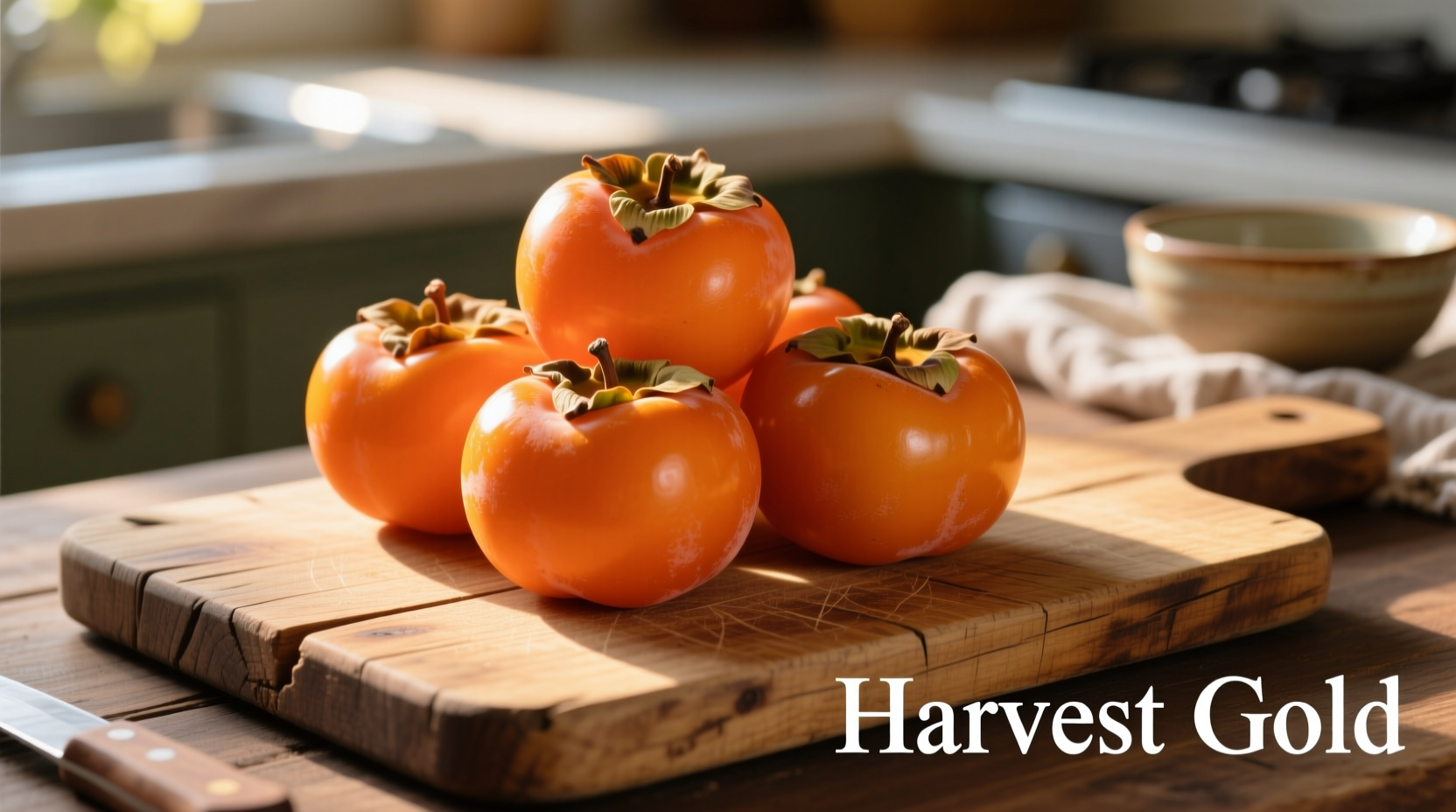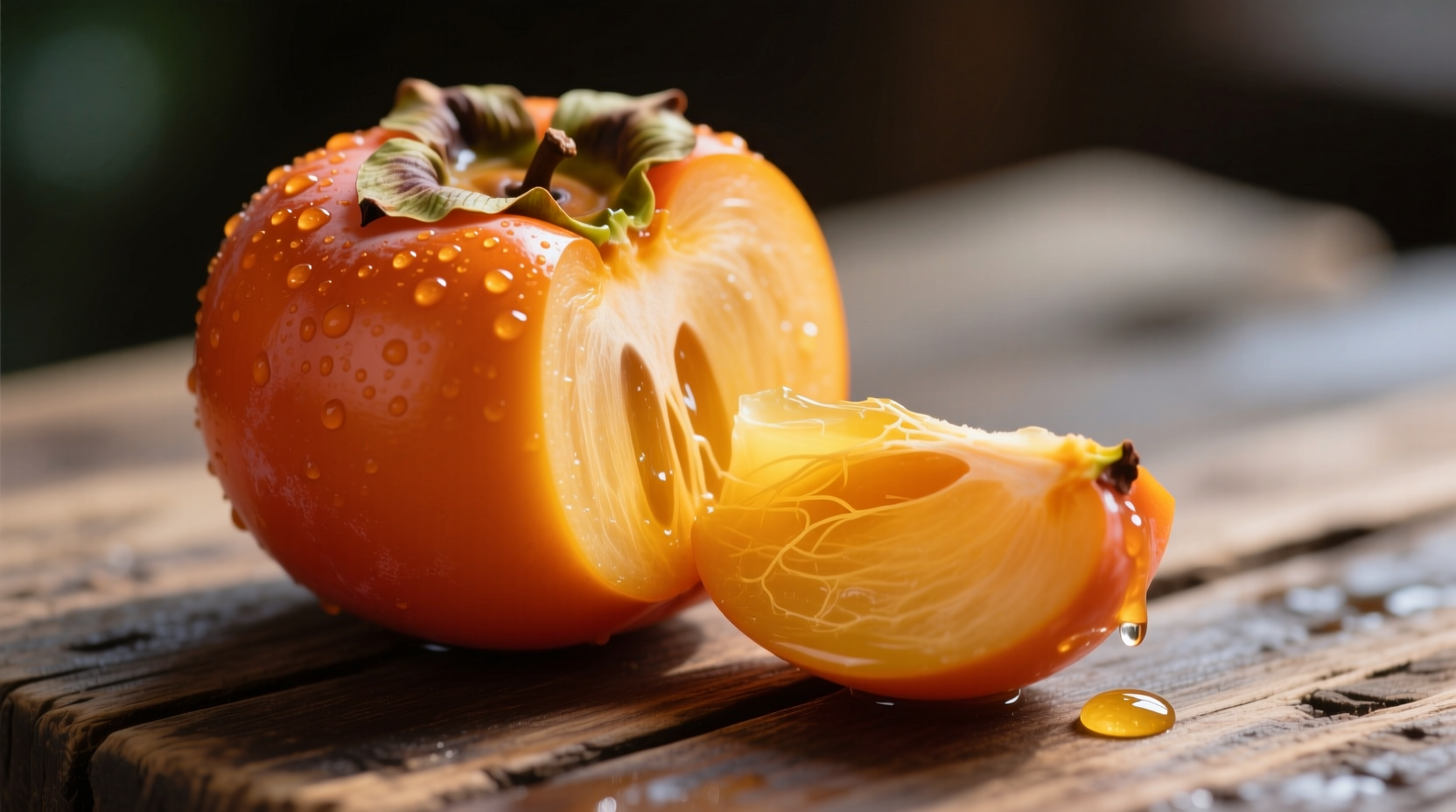Understanding Persimmon Varieties: Why Taste Differs Dramatically
When exploring what does a persimmon taste like, the first critical factor is identifying which variety you're experiencing. Two types dominate markets worldwide, each with distinct flavor profiles and optimal eating conditions:
| Variety | Texture When Ripe | Taste Profile | Best Time to Eat |
|---|---|---|---|
| Fuyu | Crisp, firm (like apple) | Honey-sweet with citrus notes | Firm but slightly yielding |
| Hachiya | Jelly-soft (like pudding) | Intense caramel, date, and brown sugar | Completely soft, almost liquid |
According to the University of California Agriculture and Natural Resources, the dramatic taste difference between varieties stems from their tannin management. Hachiya persimmons contain soluble tannins that create mouth-puckering bitterness until fully ripe, while Fuyu varieties have mostly insoluble tannins that allow consumption while still firm.
Breaking Down the Flavor Profile: What to Expect
Understanding what does a persimmon taste like requires examining both varieties at their ideal ripeness:
Fuyu Persimmons: The Crisp, Versatile Option
When sliced like an apple, firm-ripe Fuyu persimmons offer a refreshing crunch with flavor notes that professional taste testers consistently describe as:
- Subtle honey sweetness balanced with mild citrus undertones
- Distinct melon or pear-like qualities
- Delicate floral hints reminiscent of plum skin
- Minimal astringency when properly ripe
Food scientists at the USDA's Phytochemical Research Lab have identified specific compounds including β-damascenone and linalool that contribute to these complex flavor notes. These volatile compounds intensify as the fruit ripens but remain balanced due to Fuyu's lower tannin structure.
Hachiya Persimmons: The Sweet, Intense Experience
Only edible when completely soft, properly ripened Hachiya persimmons transform into one of nature's most decadent treats. Their flavor profile includes:
- Rich caramel and brown sugar notes
- Deep date or molasses sweetness
- Subtle spice undertones similar to roasted sweet potato
- Complex tropical hints of mango and banana
The Journal of Food Composition and Analysis reports that fully ripe Hachiya persimmons develop up to 30% more simple sugars than their firm counterparts, explaining their intense sweetness. As tannins polymerize during ripening, they become insoluble and lose their bitter properties.

The Tannin Factor: Why Unripe Persimmons Taste Terrible
No discussion of what does a persimmon taste like would be complete without addressing the infamous astringency of unripe fruit. Tannins—polyphenolic compounds present in high concentrations—cause an immediate drying, puckering sensation by binding with proteins in your saliva.
Research from the Oregon State University Extension Service shows that Hachiya persimmons contain approximately 1.5% tannins when firm, decreasing to 0.1% when fully ripe. This dramatic reduction explains why patience with ripening is essential for enjoyable consumption.
Practical Guide: How to Enjoy Persimmons at Their Best
Now that you understand what does a persimmon taste like, here's how to ensure optimal flavor every time:
Ripeness Indicators You Can Trust
- Fuyu: Should feel firm but yield slightly when gently pressed near the stem
- Hachiya: Must be completely soft throughout, with skin appearing almost translucent
- Color deepens from light orange to rich reddish-orange as ripeness increases
Flavor Enhancement Techniques
Professional chefs recommend these methods to maximize persimmon flavor:
- For firm Fuyu: Pair with citrus or ginger to brighten natural sweetness
- For soft Hachiya: Chill thoroughly before eating for intensified flavor
- Add a pinch of sea salt to enhance sweetness perception
- Combine with creamy elements like Greek yogurt to balance richness
Common Mistakes That Ruin the Experience
Avoid these pitfalls when exploring what does a persimmon taste like:
- Eating Hachiya persimmons before they're completely soft (results in intense bitterness)
- Storing persimmons near ethylene-sensitive produce like leafy greens
- Cooking persimmons at high temperatures which can create unpleasant bitterness
- Peeling Fuyu persimmons (the thin skin contains valuable flavor compounds)
Seasonality and Selection: Finding the Best Flavor
Persimmons reach peak flavor between October and February in the Northern Hemisphere. According to the Fresh Plaza Global Produce Report, persimmons harvested after the first autumn frost develop significantly sweeter flavor profiles due to natural sugar conversion processes.
When selecting persimmons for optimal taste:
- Look for deep orange color with no green patches
- Choose fruit with intact, green calyx (the leafy top)
- Avoid persimmons with soft spots or wrinkles
- Fuyu should feel heavy for its size, indicating juiciness
Frequently Asked Questions
Why do unripe persimmons make your mouth feel dry and bitter?
Unripe persimmons contain high levels of soluble tannins that bind with proteins in your saliva, creating an immediate drying, puckering sensation. Hachiya persimmons can contain up to 1.5% tannins when firm, which decrease to 0.1% when fully ripe as the tannins become insoluble through natural polymerization.
Can you eat persimmon skin, and does it affect the taste?
Yes, you can eat persimmon skin, and it enhances the flavor experience. The thin skin of Fuyu persimmons contains concentrated flavor compounds and provides a subtle textural contrast. For Hachiya persimmons, the skin becomes delicate when fully ripe and contributes to the overall flavor profile. Always wash persimmons thoroughly before eating with skin.
How can you speed up persimmon ripening safely?
Place firm persimmons in a paper bag with a ripe banana or apple, which releases ethylene gas that accelerates ripening. Check daily—Fuyu persimmons typically ripen in 2-4 days, while Hachiya may take 5-7 days. Never use artificial heat sources, as this can create uneven ripening and unpleasant bitterness.
What fruits taste similar to persimmons for comparison?
Ripe Fuyu persimmons share flavor notes with a sweet pear crossed with subtle citrus undertones. Fully ripe Hachiya persimmons resemble a combination of mango, dates, and caramel. Professional taste testers often describe the complex sweetness as similar to a blend of roasted sweet potato, brown sugar, and tropical fruit.
Do persimmons taste different when cooked versus raw?
Yes, cooking persimmons changes their flavor profile significantly. Gentle cooking enhances natural sweetness but can introduce bitterness if overheated due to tannin reactions. Baking or poaching works best for Hachiya persimmons, while Fuyu holds its shape better for salads or salsas. Raw consumption delivers the most complex, nuanced flavor profile that many culinary experts consider superior to cooked applications.











 浙公网安备
33010002000092号
浙公网安备
33010002000092号 浙B2-20120091-4
浙B2-20120091-4